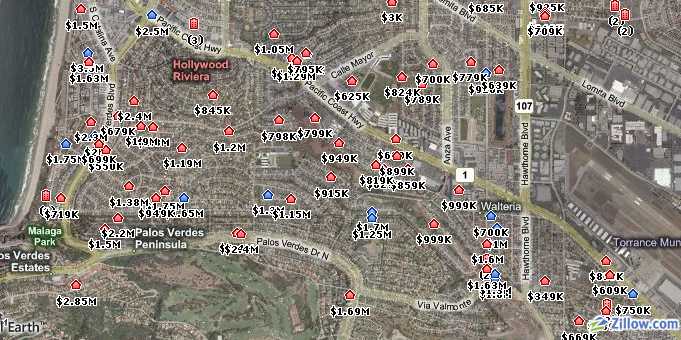Sellers, is your home on the market or are you preparing it now to go on the market soon? Here are 6 big-time homebuyer turn-offs that make buyers cringe at the thought of your home, and action steps you can take to prevent your home from being an offender:
1. Stalker-ish sellers. I know you think you’re being helpful, walking the buyer through your home and pointing out the wagon-wheel light fixture you made with your own two hands, the custom mural of a stingray you paid top dollar to have painted across your living room wall and the way the sounds of happy schoolchildren running across the front yard of your corner lot to get to the school in the next block lifts your spirits. However, the buyers might be trying really hard to ignore, minimize or figure out how to undo the very features of your home you hold dear. They also may want or need to have personal space and conversations with their mate or their agent while they’re viewing your home – you being there, especially walking right alongside them while they’re in your home, prevents them from being comfortable about doing this, or discussing all the things they would change if the home were theirs. In my experience, the more nitpicky a buyer gets about a house and the more detailed their list of things they would change, the more serious they are about considering making an offer on this place.
What’s a Seller to do? Back off. Let your home be shown vacant, or leave the house when people come to see it. If you need to be there, at least walk outside or go sit at the coffee shop down the way while prospective buyers view your home. If the buyers have questions, their people will contact your people.
2. Shabby, dirty, crowded and/or smelly houses. You already know this one. Yet, buyers constantly marvel. The buyers who come to see your home are making the decision whether to choose your home for the biggest purchase they’ve ever made during the worst economic conditions most of them have ever experienced. Your job is to get your home noticed – favorably – above the sea of other homes on the market, many of which are priced very, very low.
What’s a Seller to do? Other than listing your home at a competitive price, the only tool within your control for differentiating your home from all the foreclosures and short sales is to show it in tip-top shape. Pre-pack your place up, getting rid of as many of your personal effects as possible. Do not show it without it being completely cleaned up: no laundry or dishes piled up, countertops freshly washed, smelly dogs (I have a couple who smell on occasion – no judgment – but don’t show your house with pet odors) or litter boxes cleaned and/or out of the house.
3. Irrational seller expectations (i.e., overpricing). Buying a house on today’s market is hard work! On top of all the research and analysis about the market and situating their own lives to be sure they’ll be able to afford the place for 5, 7, 10 years – or longer, buyers have to work overtime to separate the real estate wheat from the chaff, get educated about short sales and foreclosures and often put in many, many offers before they get even a single one accepted. The last thing they want to add to their task lists is trying to argue a seller out of unreasonable expectations or pricing. And, in fact, there are so many other homes on the market, buyers don’t have to do this. When they see a home whose seller is clearly clueless about their home’s value and has priced it sky-high, most often they won’t bother even looking at it. If they love it, they’ll wait for it to sit on the market for awhile, hoping the market will “educate you” into desperation, priming the pump for a later, lowball offer.
What’s a Seller to do? Get real. Get out there and look at the other properties that are for sale in your area and price range. Get multiple agents’ take on what your home should be listed at, and don’t take it personally if their recommendation is low. If your home has much less curb appeal or space or is much less upgraded than the house across the way, don’t list it at the same price and expect it to sell. If you owe more than your home is realistically worth, you may need to reexamine whether you really want or need to sell, or consider a short sale, if you simply have to sell. Don’t be tempted into testing your market with an obviously too-high price, unless you’re prepared to have your home lag on the market and get lowball offers.
4. Feeling misled. Here’s the deal. You will never trick someone into buying your home. If the listing pics are photo-edited within an inch of their lives. If your neighborhood is described as funky and vibrant, as code for the fact that your house is under the train tracks and you live in between a wrecking yard and a biker bar, prospects will figure this out. If the detailed information about your home, neighborhood or even transactional position (e.g., short sale status, seller financing, etc.) is misrepresented, the sheer misrepresentation will turn otherwise interested buyers off. If you authorize your agent to “verbally approve” the buyer’s offer, don’t go back the next day demanding an extra $5,000. In cases where the buyer feels misled, whether or not that was your intention, running through the buyer’s mind is this question: If they can’t trust you to be honest about this, how can they trust you to be honest about everything else?
What’s a Seller to do? Buyers rely on sellers to be upfront and honest – so be both. If your home has features or aspects that are often perceived negatively, your home’s listing probably shouldn’t lead with them (like the ad I recently saw with the intro line: “this place is a mess!”), but neither should you go out of your way to slant or skew or spin the facts which will be obvious to anyone who visits your home. Make sure you know what the listing of your home reads like, before it’s published to the web, and that a prospective buyer will not feel misled by it.
5. New, ugly home improvements. Many a buyer has walked into a house that has clearly been remodeled and upgraded in anticipation of the sale, only to have their heart sink with the further realization that the brand-spanking-new kitchen features a countertop made, not of Carerra marble, but brand-new, pink tiles with a kitty cat in the middle of each one (I saw this once, people – no joke). Or the pristine, just-installed floors feature carpet in a creamy shade of blue – the buyer’s least favorite color. New home improvements that run totally counter to a buyer’s aesthetics are a big turn-off, because in today’s era of Conspicuous Frugality, buyers just can’t cotton to ripping out expensive, brand new, perfectly functioning things just on the basis of style – especially since they’ll feel like they paid for these things in the price of the home.
What’s a Seller to do? Check in with a local broker or agent before you make a big investment in a pre-sale remodel. They can give you a reality check about the likely return on your investment, and help you prioritize about which projects to do (or not). Instead of spending $40,000 on a new, less-than-attractive kitchen, they might encourage you to update appliances, have the cabinets painted and spend a few grand on your curb appeal. Many times, they will also help you do the work of selecting neutral finishes that will work for the largest possible range of buyer tastes.
6. CRAZY listing photos (or no photos at all). We’ve seen listing photos that have dumpsters parked in front of the house, piles of laundry all over the “hardwood” floors touted in the listing description, and once, even the family dog doing his or her business in the lovely green front yard. Listing pictures that have put your home in anything but its best, accurate light are a very quick way to ensure that you turn off a huge number of buyers from even coming to see your house! The only bigger buyer turn-off than these bizarre listing pics are listings that have no photos at all; most buyers on today’s market see a listing with no pictures and click right on past it, without giving the place a second glance.
What’s a Seller to do? Hire local area experts, like us and we will make sure all of these details are covered! Or, check your home’s listing and make sure that the pics represent your home well. If not, ask your agent to grab some new shots and get them online (and say pretty please, pretty please!).
Thanks to Trulia Real Estate



